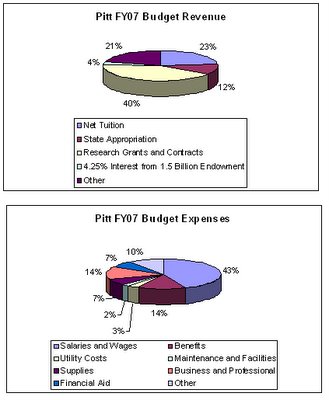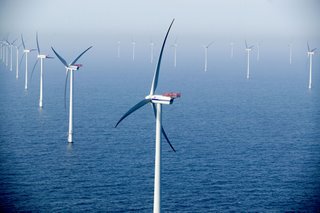In 1990, Jean Mayer, President of Tufts University, invited university leaders throughout the world to convene in Talloires, France, in order to discuss and define the role of institutions of higher learning in the debate on environmental sustainability. Twenty-two presidents, rectors, and chancellors of distinguished universities throughout the globe, attended the confererance from October 4-7 at Tufts' European University Center in Talloires. Assisted by internationally renown envirnomental experts, the convenors discussed the responsibility that universities have, as the educators of tomorrow's environmental policy makers in order to ensure that our future would be in the hands of men and women educated on the fundamental importance of environmental sustainability.
The convenors stressed the importance of the university as a role model, asserting that:
The university is a microcosm of the larger community, and the manner in which it carries out its daily activities is an important demonstration of ways to achieve environmentally responsible living. By practicing what it preaches, the university can both engage the students in understanding the institutional metabolism of materials and activities, and have them actively participate to minimize pollution and waste.The result of the conference was the
Talloires Declaration.The signatory's of the declaration considered it to me an important first step in mobilizing the considerable resources of universities to work in the direction of an environmentally sustainable future. They pledged mutual support and that they would
take actions at their own campuses to implement the recommendations of the declaration.
The University of Pittsburgh, was one of three universities in the United States to be original signatories to this historic document!
The following are the original
recommendations:
RECOMMENDATIONS University presidents must take action to focus university attention on environment, population, and development issues. They should:
1. Use every opportunity to raise public, government, foundation, and university awareness by publicly speaking out on the importance of environmental concerns.
2. Seek large increases in the funding of interdisciplinary, environmental research. Research funds are often earmarked for traditional disciplines, resulting in the continuing compartmentalization of problems and solutions. The funding available for research on population, environment, and sustainable development is a tiny fraction of that available for basic science, defense, and aerospace.
3. Encourage outstanding scholars who engage in research and teaching on environmental topics, and help them lead other scholars in this direction.
4. Establish programs in all major disciplines to teach about environment, population, and sustainable development in the context of these disciplines.
5. Work with faculty to change tenure and promotion requirements to reward interdisciplinary work on environment, population, and sustainable development issues.
6. Set aside funding and create positions for interdepartmental and interschool faculty who will research and teach population, environment, and sustainable development topics.
7. Appoint a special adviser, an environmental programs dean, or faculty group to promote environmental programs within the university.
8. Encourage multidisciplinary thinking with the use of internships, capstone and integrating seminars, work study, and case studies.
9. Establish a university environmental policy to engage faculty, staff, administration, and students in activities such as energy and water conservation, and recycling. Encourage vendors who supply schools with products and services to act in an environmentally responsible manner when manufacturing their products and delivering their services.
10. Develop cooperative programs with universities in other countries to promote faculty and student exchanges, collaborative research, and education programs that develop international understanding.
11. Establish multidisciplinary and interdisciplinary structures, such as "centers of excellence" for research, education, and policy development within the university.
12. Establish partnerships with primary and secondary schools to enhance the capability of their faculty in teaching about population, environment, and sustainable development issues.
I emphasized recommendation #10 because it is the most relevant to the goal of the Campaign for a Greener University of Pittsburgh. Recommendation #10 calls on the universities to:
Encourage vendors who supply schools with products and services to act in an environmentally responsible manner when manufacturing their products and delivering their services.
Pitt spends approximately $30 million on electricity each year. How can the environmental impact of such a significant product be overlooked by the university? Since the university currently purchases none of its energy from renewable resources, it must be purchasing most of its energy from coal plants (and some from nuclear plants). Coal plants produce millions of tons of pollution on a daily basis while wind generators produce none.
I plan to grade the University of Pittsburgh (on a A-F scale) in the upcoming weeks on the extent to which it has lived up to the commitment it made in signing the Talloires Declaration. I will examine each of the 12 reccomendations individually and then take the average score. I know that the university has excelled in some regards but it is sorely lacking in many others.
Do you think the university has lived up to its commitement?

 What better place to inculcate young people with the idea of saving energy than a university, and what a good example of the effectiveness of changing over to compact flourescents. At the University of Guelph in Ontario, Canada, they changed all 6,600 bulbs in student residences to CFL's. Results: 810,000 kWH less consumption per year; $ 64,000 saved in power purchases; 751,000 kg of CO2 not put into the atmosphere. We like also how students voted to spend extra money on 100% wind power for their student-run cafeteria. Go Guelph!
What better place to inculcate young people with the idea of saving energy than a university, and what a good example of the effectiveness of changing over to compact flourescents. At the University of Guelph in Ontario, Canada, they changed all 6,600 bulbs in student residences to CFL's. Results: 810,000 kWH less consumption per year; $ 64,000 saved in power purchases; 751,000 kg of CO2 not put into the atmosphere. We like also how students voted to spend extra money on 100% wind power for their student-run cafeteria. Go Guelph! 










